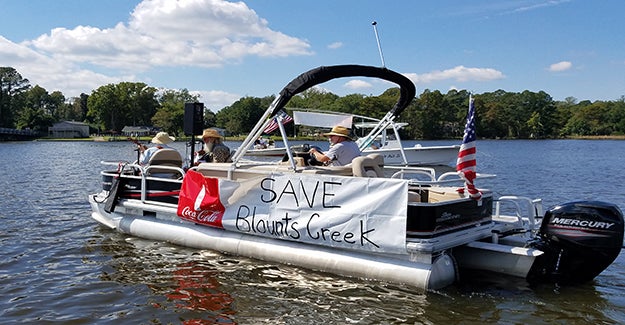Study ranks NC rural bridges as some of the worst in the nation
Published 7:58 pm Thursday, May 23, 2019
From AAA Carolinas
A recent study done by TRIP, a national transportation research group, found that North Carolina’s rural bridges have significant deficiencies (ninth in the nation) and its rural roads have high fatality rates (11th in the nation) and the organization is suggesting repairs and modernization to improve conditions.
America’s rural transportation system is in need of repairs and modernization to support economic growth in the nation’s heartland, which is a critical source of energy, food and fiber. With increases in population and growing employment, rural America is heavily reliant on the quality of its transportation system to sustain further growth. This is according to a new report released today by TRIP, a national transportation research nonprofit. The report, “Rural Connections: Challenges and Opportunities in America’s Heartland,” evaluates the safety and condition of the nation’s rural roads and bridges and finds that the nation’s rural transportation system is in need of immediate improvements to address deficient roads and bridges, high crash rates, and inadequate connectivity and capacity. The chart below shows the states with the highest rate of rural pavements in poor condition, states with the highest share of rural bridges that are rated poor/structurally deficient and states with the highest fatality rates on non-Interstate, rural roads.
Twelve percent of North Carolina’s rural bridges are rated as poor/structurally deficient, the ninth highest share in the U.S. Bridges that are poor/structurally deficient have significant deterioration to the major components of the bridge and are often posted for lower weight or closed to traffic, restricting or redirecting large vehicles, including agricultural equipment, commercial trucks, school buses and emergency services vehicles. The rate of traffic fatalities on North Carolina’s non-Interstate, rural roads is the 11th highest in the nation and is three-and-a-half times higher than the fatality rate on all other roads in the state – 2.43 fatalities per 100 million vehicle miles of travel vs. 0.70. The report finds that 26 percent of North Carolina’s rural roads are rated in poor or mediocre condition.
“Safe, efficient road systems are critical to the economic future of rural North Carolina,” says NC Rural Center President Patrick Woodie. “While we do not have the congestion of urban areas, our rural communities have unique transportation challenges that must be addressed. Rural North Carolina has the 11th highest fatality rates in the nation–a rate that is three times higher than in our state’s urban areas. We applaud NCDOT for the work they are doing with the limited resources they have, but we must do more to make our rural roads safer.”
“Damaged and deteriorating roadways too often result in deadly crashes, and it is time to act,” said Tiffany Wright, AAA Carolinas spokesperson. “AAA Carolinas advocates that making investments in critical safety improvements to rural roads will save thousands of lives each year and help move our economy forward.”
America’s rural transportation system provides the first and last link in the supply chain from farm to market, connects manufacturers to their customers, supports the tourism industry, and enables the production of energy, food and fiber. Rural Americans are more reliant on the quality of their transportation system than their urban counterparts.
“This report highlights again the critical need for federal action to modernize our nation’s infrastructure,” said Ed Mortimer, vice president of transportation infrastructure of the U.S. Chamber of Commerce. “We have a historic opportunity to address many rural infrastructure needs with President Trump and Congress discussing a major infrastructure bill. Let’s hope they act to address this critical issue!”
The TRIP report finds that the U.S. needs to implement transportation improvements that will improve rural transportation connectivity, safety and conditions to provide the nation’s small communities and rural areas with safe and efficient access to support quality of life and enhance economic productivity.
“Farmers and ranchers depend on rural roads, highways and bridges for daily life and to move their products to market,” said Zippy Duvall, president of the American Farm Bureau Federation. “Securing the appropriate resources at the local, state and federal levels will allow for the improvements needed to provide a rural transportation system that will keep goods moving, American agriculture competitive and rural Americans safe.”
“The health of the nation’s economy and the safety and quality of life in America’s small communities and rural areas ride on our rural transportation system. Our rural roads and bridges provide crucial links from farm to market, move manufactured and energy products, and provide access to countless tourism, social and recreational destinations,” said Will Wilkins, executive director of TRIP. “Fixing the federal Highway Trust Fund with a long-term, sustainable source of revenue that supports the transportation investment needed will be crucial to the modernization of our rural transportation system.”
AAA Carolinas, an affiliate of the American Automobile Association, is a not-for-profit organization that serves more than 2.2 million members and the public with travel, automobile and insurance services while being an advocate for the safety and security of all travelers.





